
This storage container filled with gold gilding supplies has been on the shelf staring at me for months. I’ve never tried it, but I’ve wanted to for years. I’m finally working on a project I planned on applying gold gilding to a painting. I think I pushed it off for so long because I thought it was a huge process, but it turned out to be really easy and quick.
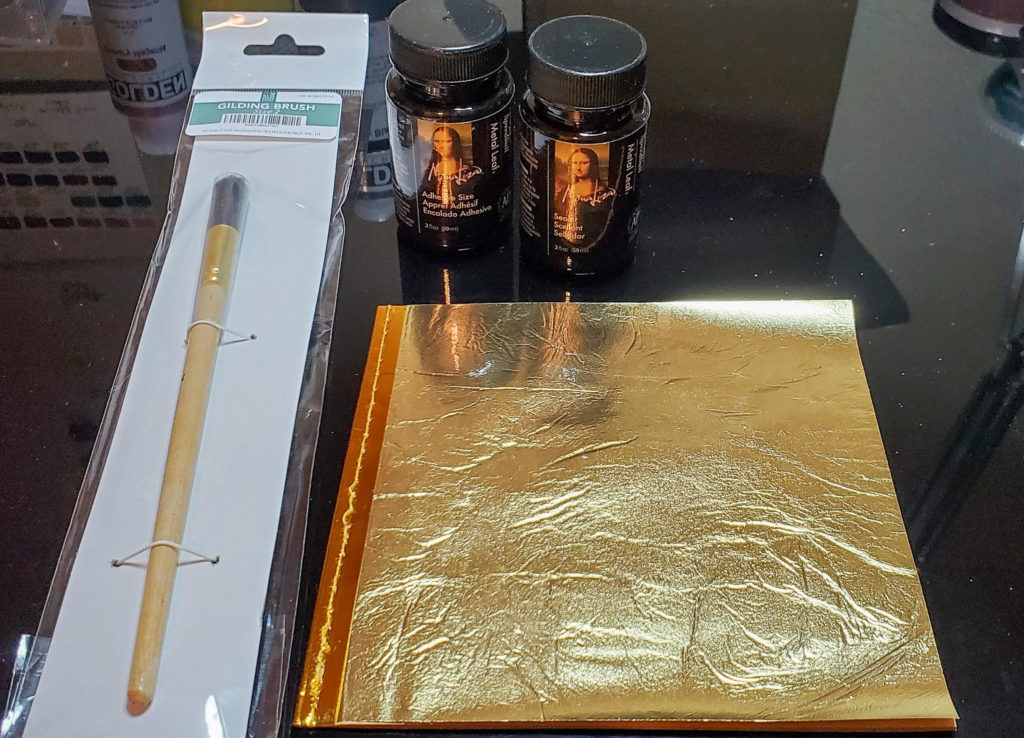
For supplies, I used the following:
- Speedball Mona Lisa Gold Leaf Kit (Gold sheets, adhesive, and sealant)
- Gilding Brush (or a clean fluffy makeup brush or a Haki Brush)
- A container with a lid to hold all the leftover gold bits.
- A small paintbrush I didn’t care about.
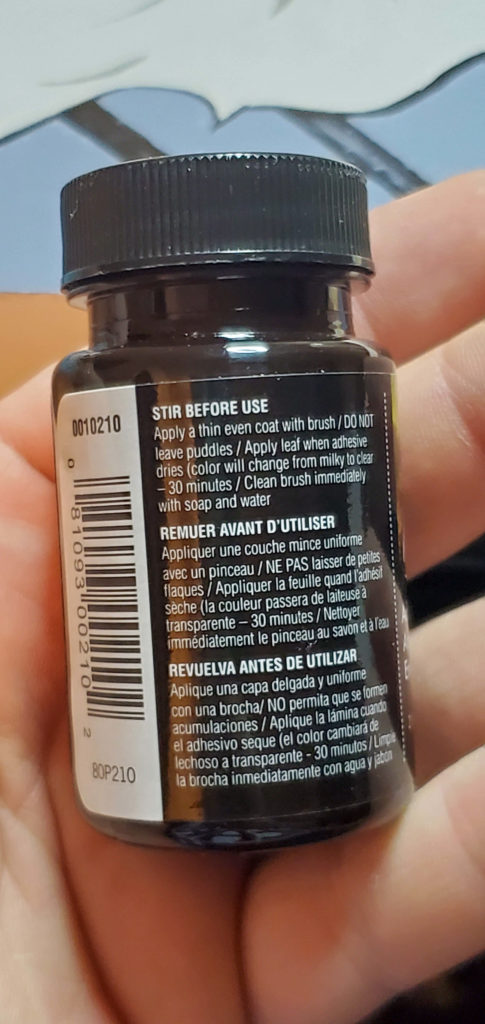
According to the instructions, you’ll need to stir the adhesive before using it. Or be too lazy, like me, to grab the stir sticks 4 feet behind me and just shake it. Then let it sit for a minute until the bubbles pop.
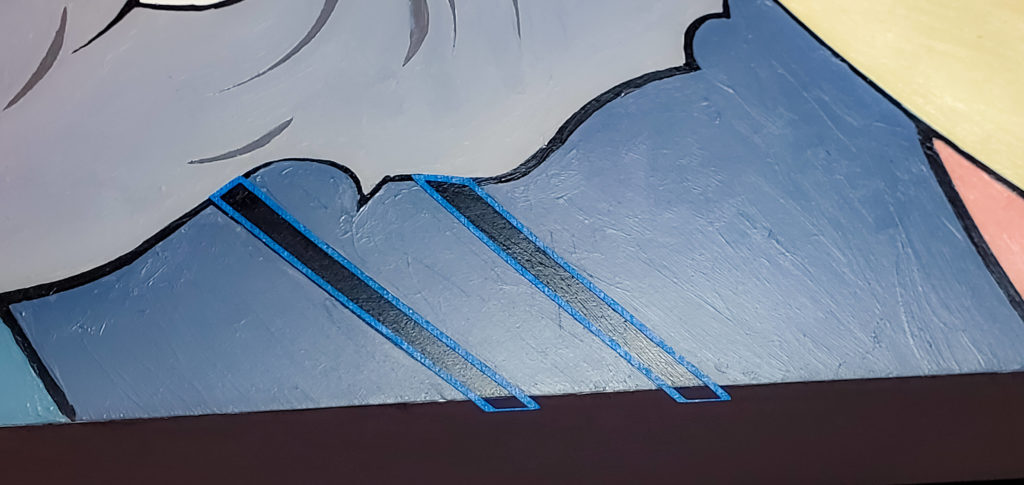
Paint on a thin coat where you want the gold leaf to stick and let dry. You’ll know it’s dry once it turns from milky white to clear. The bottle said it would take 30 minutes, but it was mostly dry after 2 minutes and then I grabbed a hairdryer because I am both lazy and impatient.
I wanted the areas I was gilding to retain a black outline, so I cut some blue painters tape on my Cricut to mask the shape. Once I was done painting the adhesive on, I quickly pulled the tape off to make sure it didn’t get glued down as well.
Wash your brush immediately after you’re done. Just a swoosh in a cup of water was all that was needed between sections of the painting. Then wash with soap and water when you’re done using it.
If you have a wide Haki brush, you can grab the gold leaf from the booklet and slide it only your project using the brush. The gold leaf should cling to the brush but that apparently was not true if you’re using the a small gilding brush.
Using my fingers, I pulled it out of the booklet and onto my painting. I was surprised how durable the foil was. I was expecting it to instantly break once I touched it, but I manhandled it onto my project without any tearing.
Smooth out the foil using your brush and make sure it’s all stuck down to the adhesive. Then using circular motions, scrub the gold leaf and allow the excess foil to break off. Again, I was surprised how strong the gold leaf was, it really took some scrubbing to get some of it to break off.

Sweep all the pieces into a container making sure not to breathe. One tiny draft of air and they will go flying everywhere!
I had multiple spots I wanted to cover on my painting so I used the little pieces I just collected. When the adhesive was dry, I patted my tiny pieces into place and scrubbed again. I thought you might be able to see the edges of the leaf if you used pieces, but that was not the case. I could not tell the difference from the first section where I used a full sheet to the second section where I used the remaining pieces.
Finally, the last step is to use a sealer on top of the foil. Metal foils are susceptible to oxidation and will become dull. The sealant worked like a watery Elmer’s glue or Mod Podge. Honestly, I wouldn’t be surprised if that’s all it was.
Overall, I’m glad I finally gave this a shot. I don’t know why I thought gilding was a huge process. It turned out to be one of the simplest things I’ve tried in a long while.
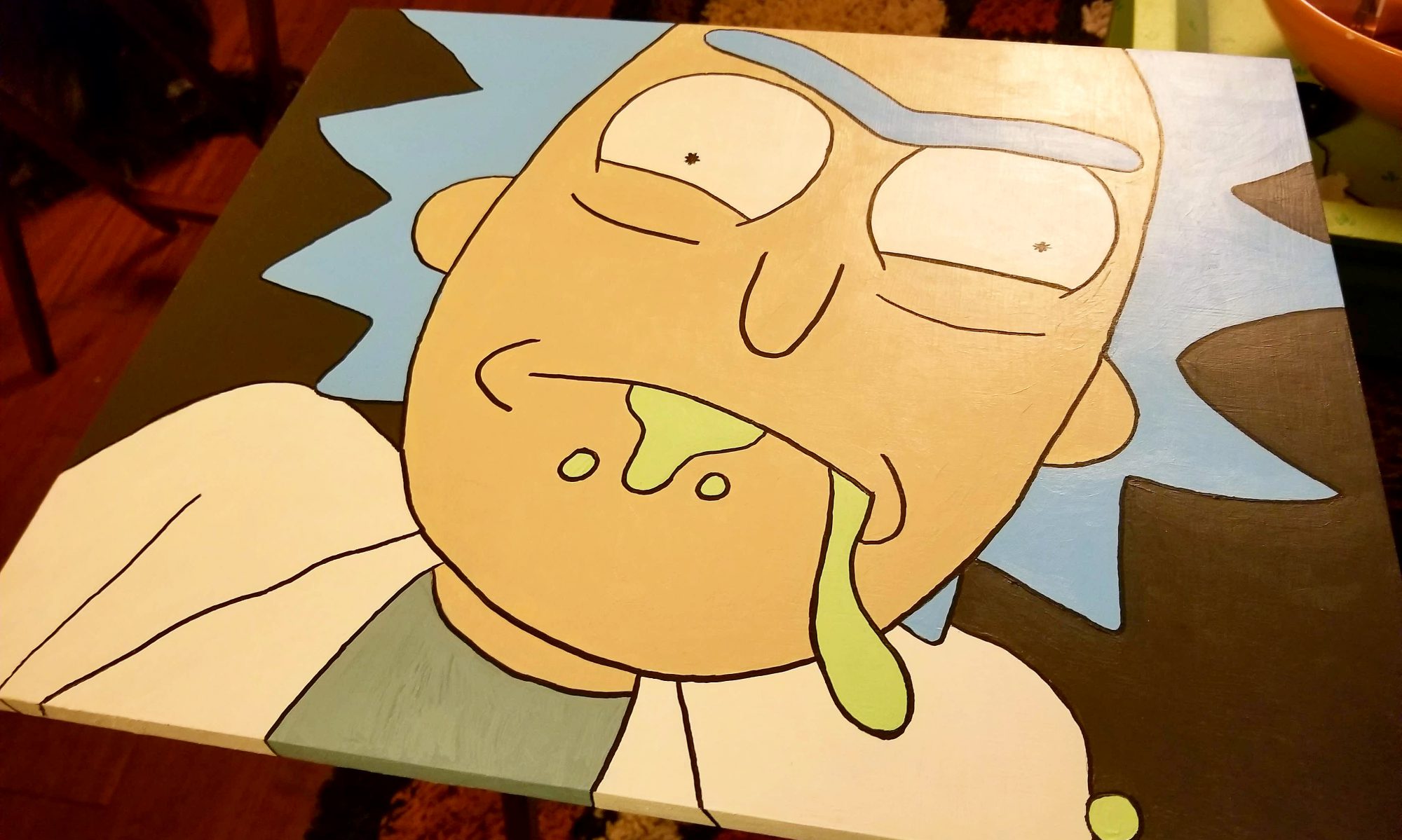
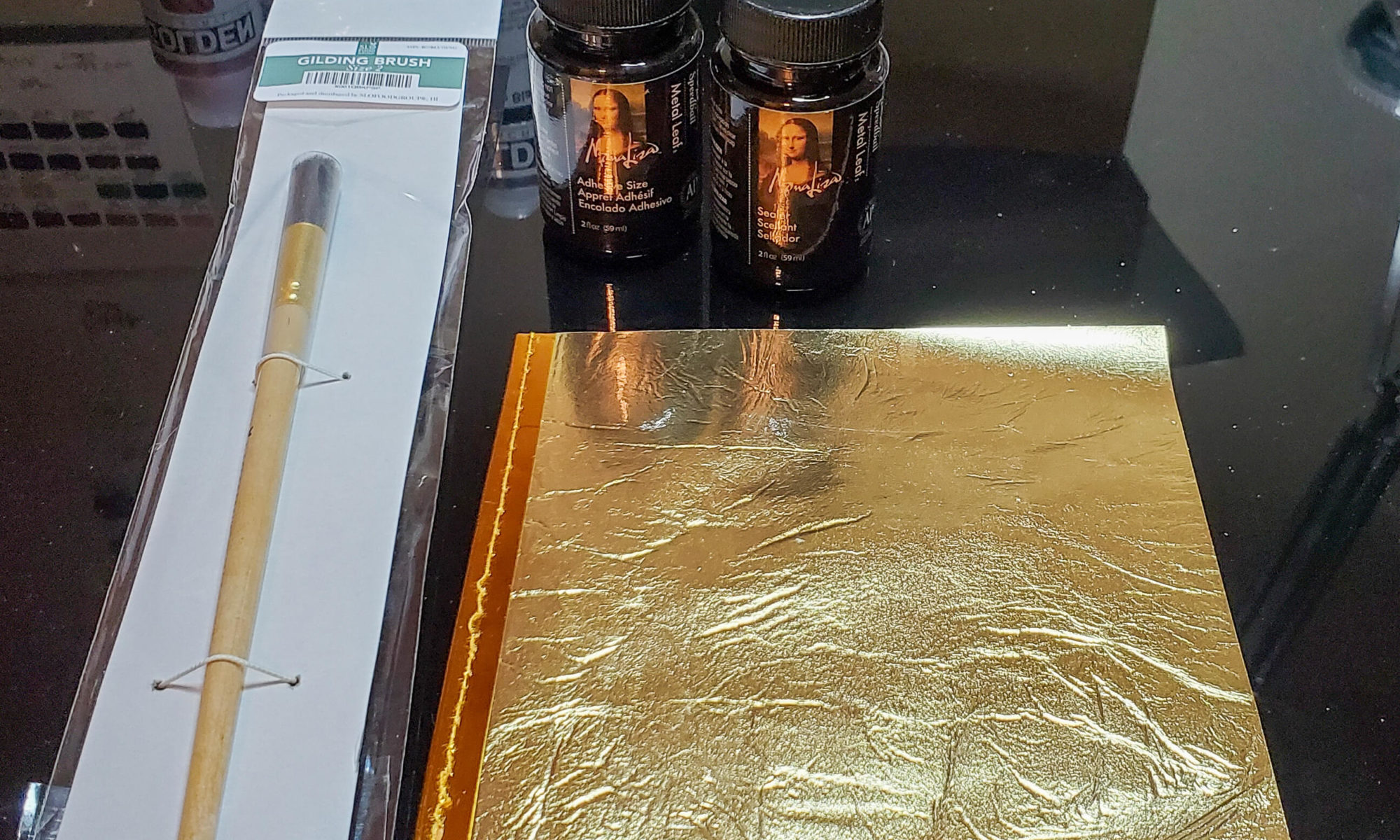
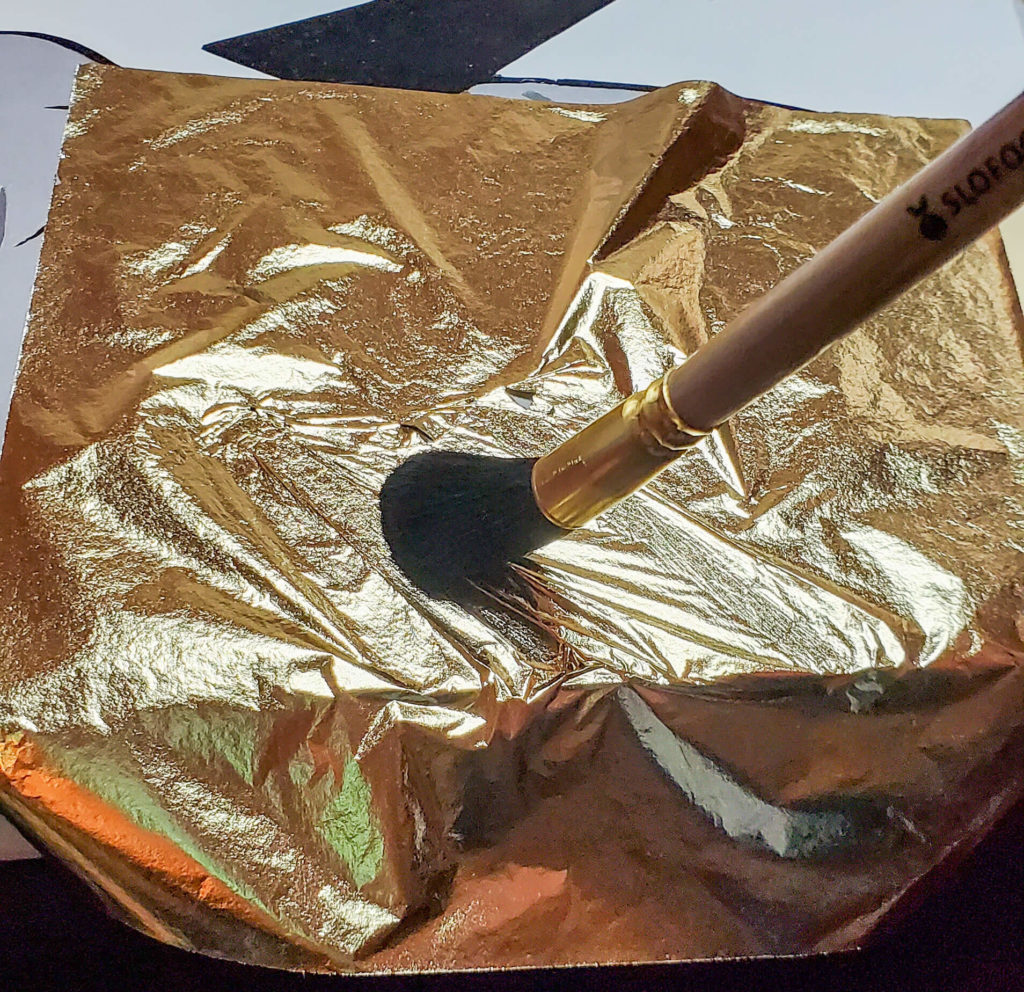
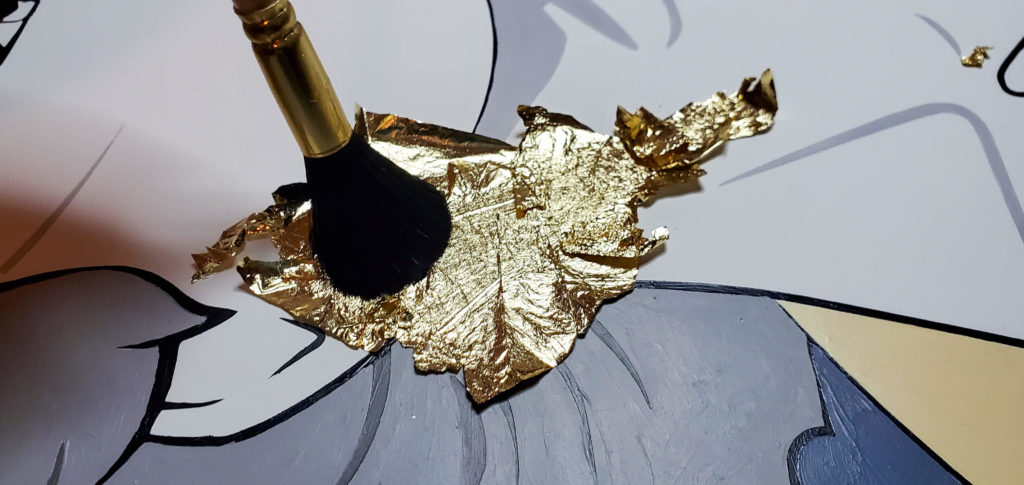
+1